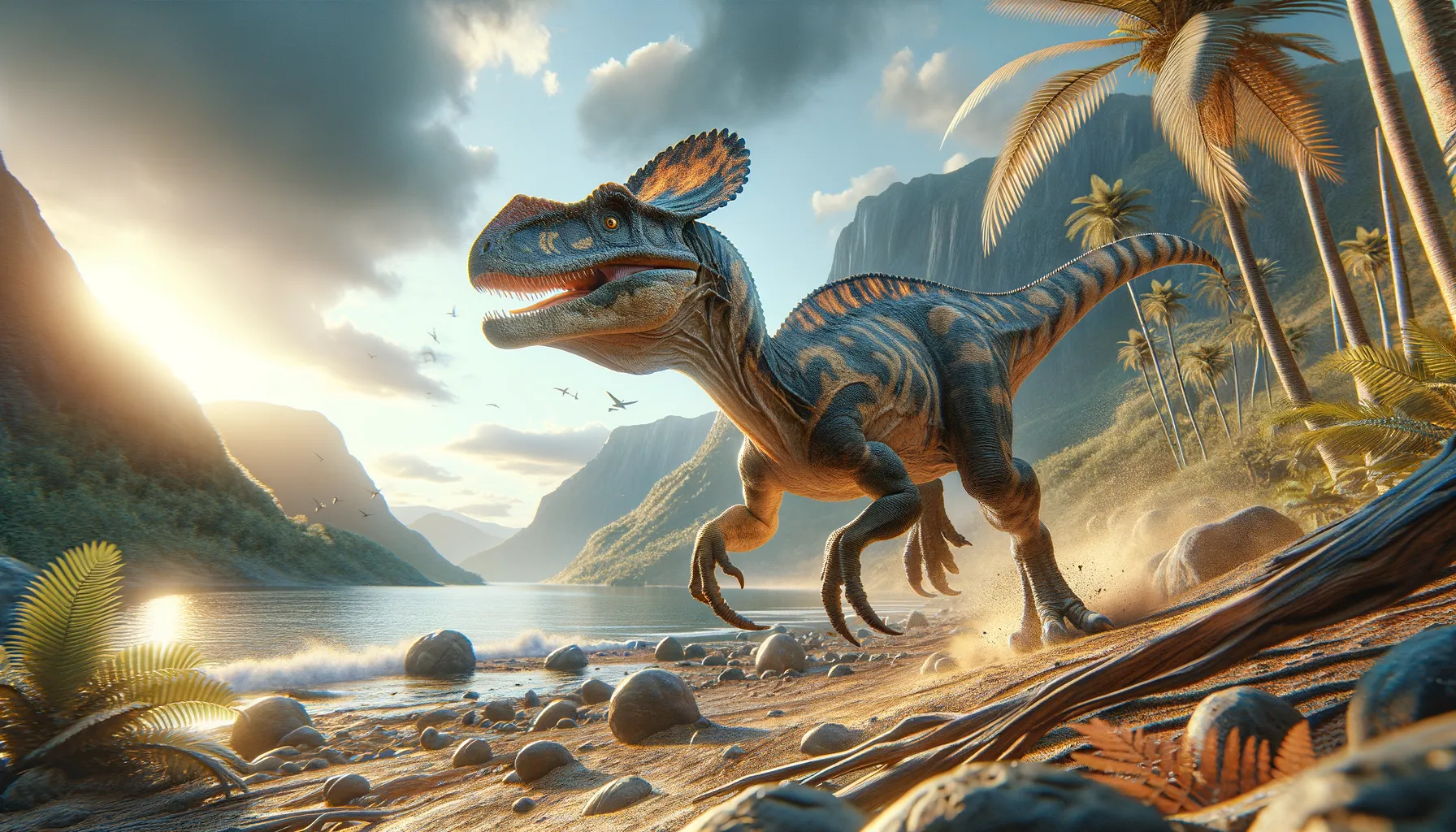
Venaticosuchus
Swift predator of the Triassic age!
Period
Triassic
Length
About 2 to 3 meters in length.
Height
Estimated around 0.5 to 1 meter tall.
Weight
Lightweight, approximately 10 to 15 kg.
Venaticosuchus was a small, agile dinosaur that thrived during the Triassic period. As a lightly built carnivore, it preyed on small animals and adapted to the changing environment it inhabited. Its fossils provide insights into the evolution of early archosaurs, demonstrating unique cranial features that suggest a keen predatory lifestyle. Although not among the largest of its kind, Venaticosuchus relied on speed and intelligence to navigate its prehistoric landscapes.
Diet
Venaticosuchus was primarily a carnivore, feeding on small vertebrates and possibly insects. Its diet would have included early reptiles and mammals that were present in its environment.
Hunting
With its quick reflexes, Venaticosuchus likely stalked its prey, relying on surprise and speed to capture it. Its small size and agility would have made it an adept hunter in dense vegetation or uneven terrain.
Environmental challenges
During the Triassic period, Earth was undergoing significant environmental changes, including fluctuating climates and evolving ecosystems. Venaticosuchus had to adapt to these changes, developing traits that allowed it to be versatile in its approach to survival. It faced competition both from other carnivorous species and from changing landscapes that demanded resilience and adaptability.
Speed
Agile and quick, capable of swift movements.
Lifespan
Estimated around 20 to 30 years.
First discovery
Found in Argentina in the late 1960s.
Fun Facts
- Venaticosuchus was a small dinosaur-like reptile that lived during the Late Triassic period, around 230 million years ago.
- Despite its dinosaur-like appearance, Venaticosuchus is not classified as a dinosaur but belonged to a group called the archosaurs, which also includes crocodiles and birds.
- The name 'Venaticosuchus' means 'hunting crocodile', reflecting its presumed predatory lifestyle.
- Fossils of Venaticosuchus have been primarily found in Argentina, providing clues about the prehistoric environment of South America.
- Venaticosuchus is believed to have been a fast runner, using its strong legs to chase down prey.
- This creature was relatively small, estimated to be only about the size of a large dog, making it nimble and quick.
- Venaticosuchus helps scientists understand the early evolutionary paths that led to the development of more familiar dinosaurs.
Growth and Development
Young Venaticosuchus probably grew rapidly, reaching maturity quickly to ensure survival amidst predators. This rapid growth would have required a rich diet to sustain high energy levels. Development may have included changes in skull and jaw structures as they matured, optimizing them for a carnivorous lifestyle.
Habitat
This dinosaur inhabited regions that were likely semi-arid with seasonal climates. Vegetation would have been sparse, with open areas as well as some forested regions, providing it with easily navigable hunting grounds. The presence of rivers and streams would have been crucial for sustaining plant and animal life in its habitat.
Interaction with other species
Venaticosuchus coexisted with a variety of other species, including early mammals and other archosaurs. It likely competed with other carnivorous reptiles for food resources. Its adaptability and keen senses would have helped it navigate these interactions, maintaining its role as a small predator in its ecosystem.
Natural lifespan
Venaticosuchus could live naturally between 20 and 30 years.
Reproduction
Venaticosuchus likely laid eggs, as with modern reptiles, with clutches possibly hidden in vegetation or buried for protection. Parental care might have involved guarding the nest to ensure the young had a chance at survival. Hatchlings would have been vulnerable, requiring rapid growth and acclimatization to their surroundings.
Social behaviour
While little is known about its social behavior, Venaticosuchus may have been solitary or lived in small groups. Interaction with others would have included competing for mates or territory. Communication among them could have involved visual signals or vocalizations, particularly during mating seasons.
Fossil locations
Fossils of Venaticosuchus have been primarily found in Argentina, offering crucial insights into its morphology and lifestyle. These fossils help paleontologists understand its role within the Triassic ecosystem. The discoveries highlight South America's significance as a rich source of prehistoric life and diversity.
